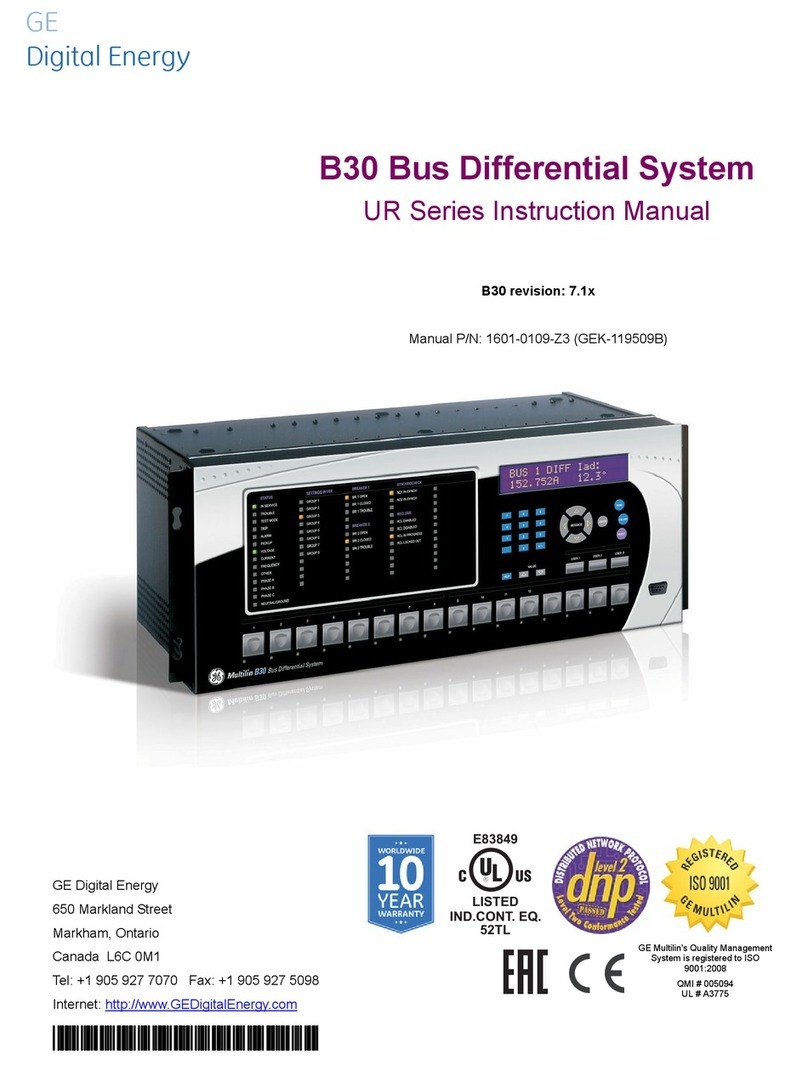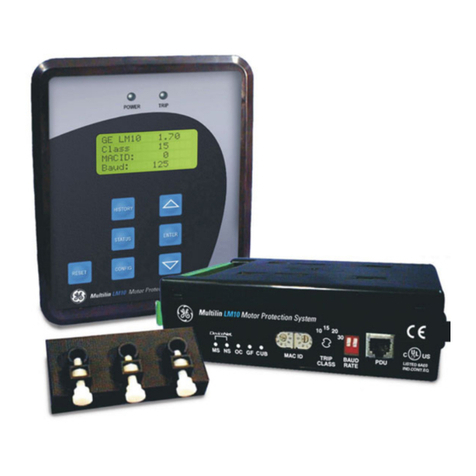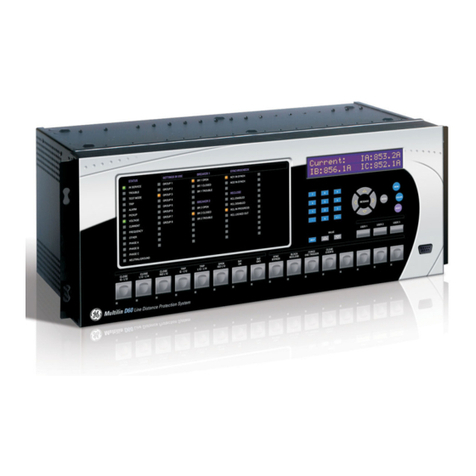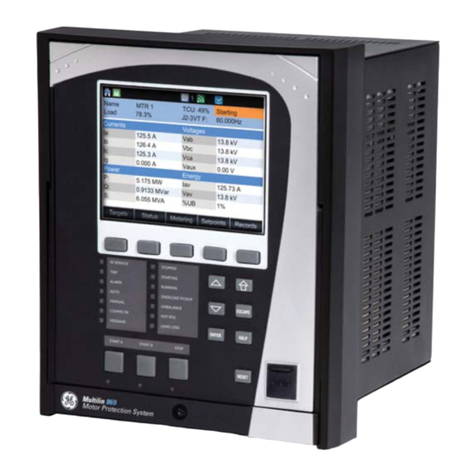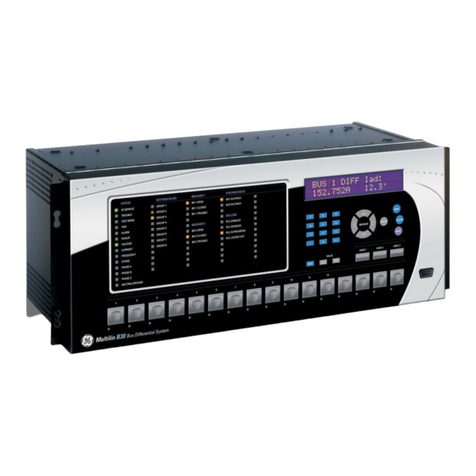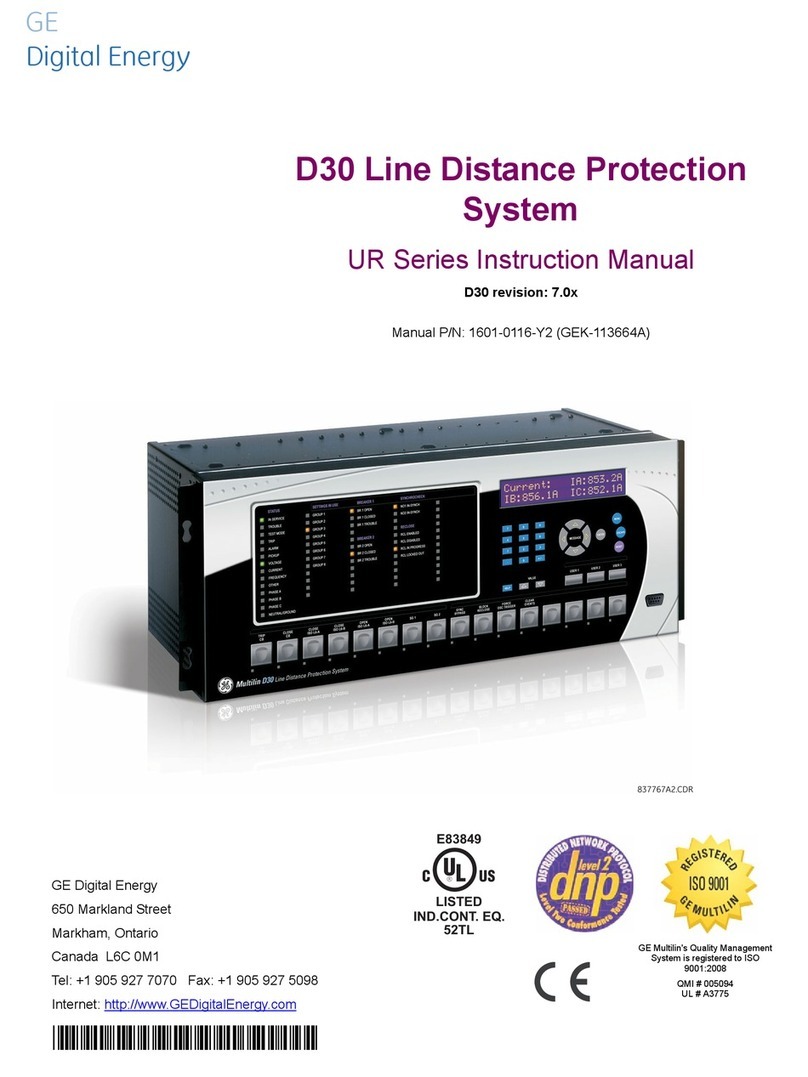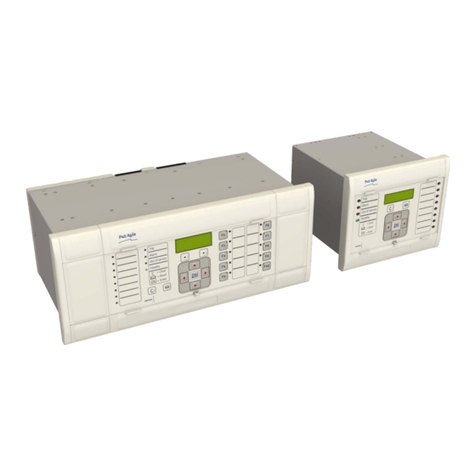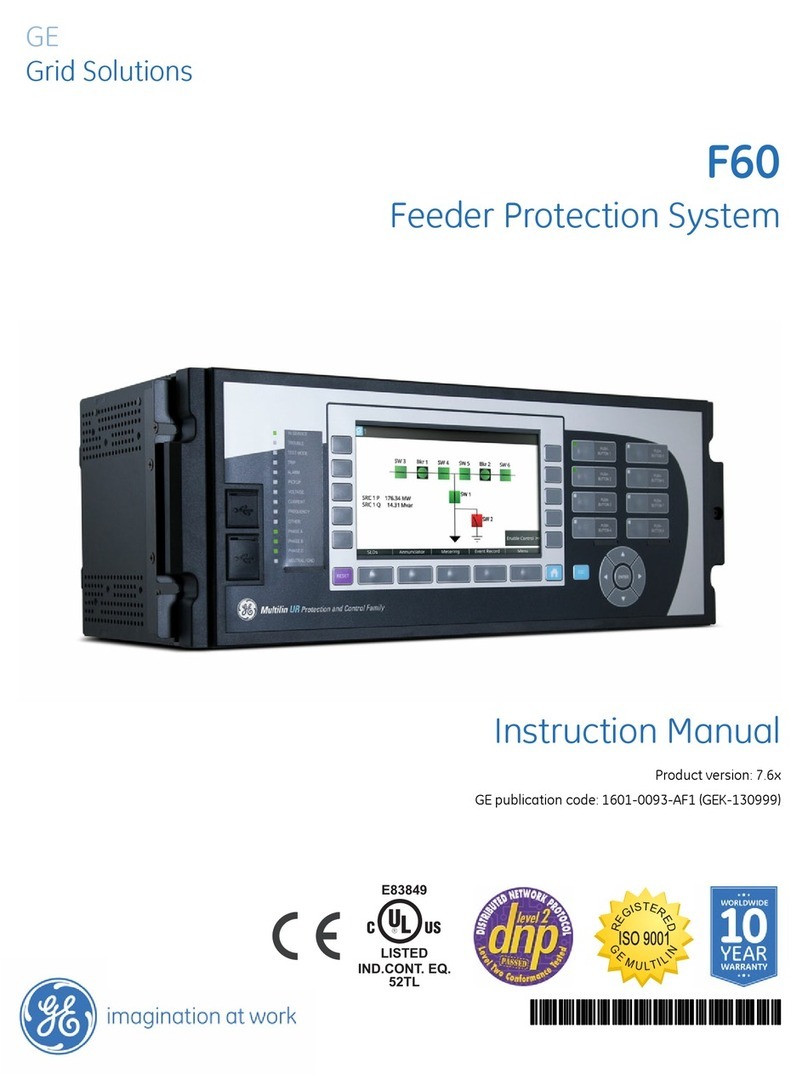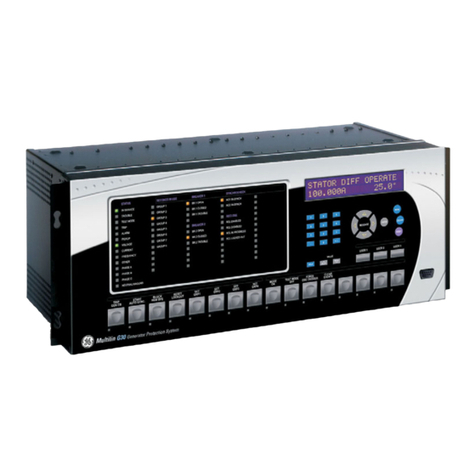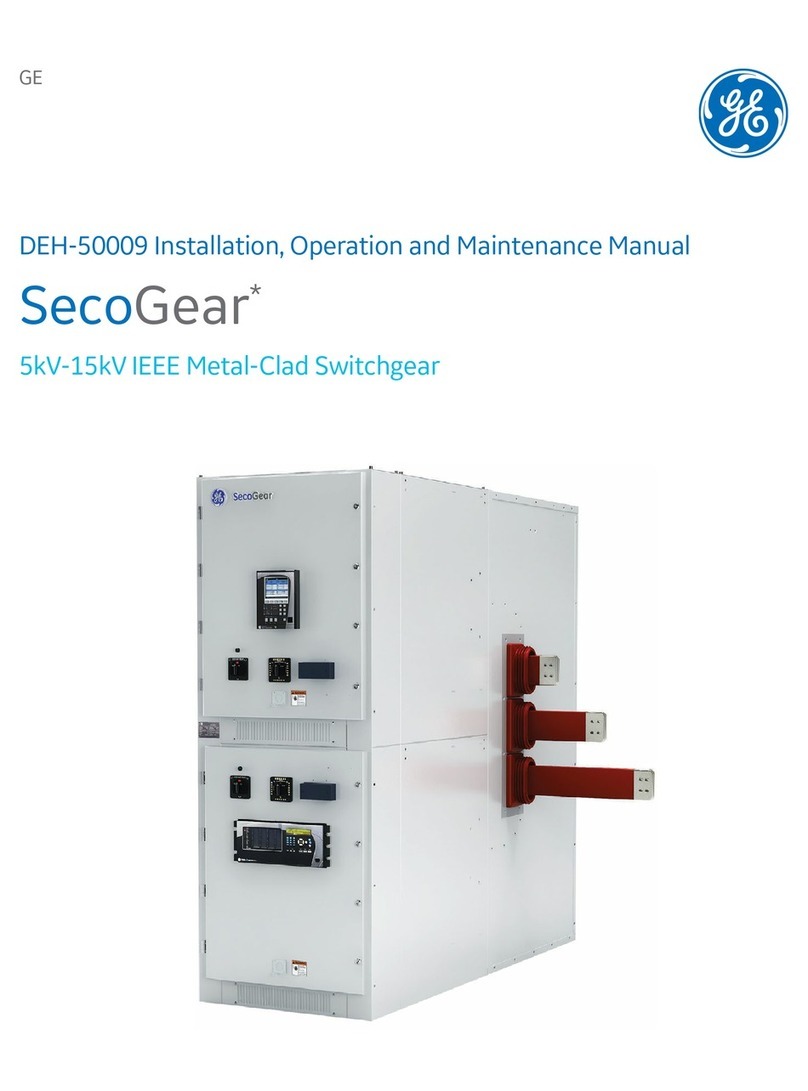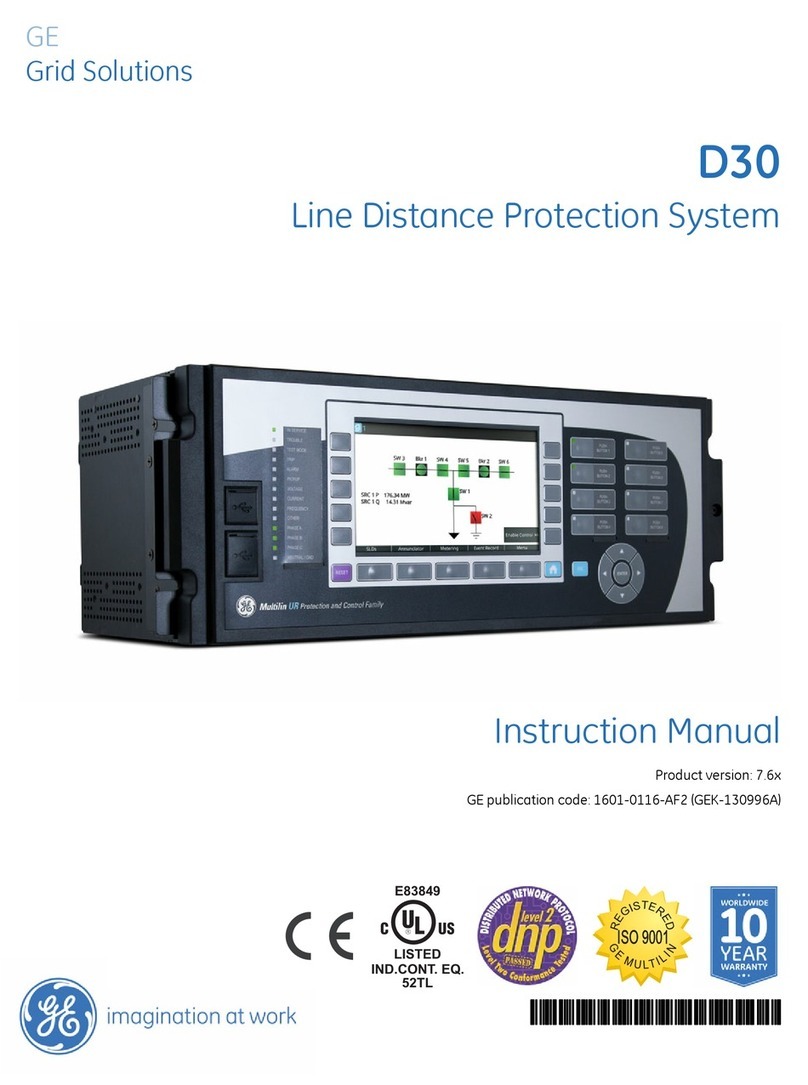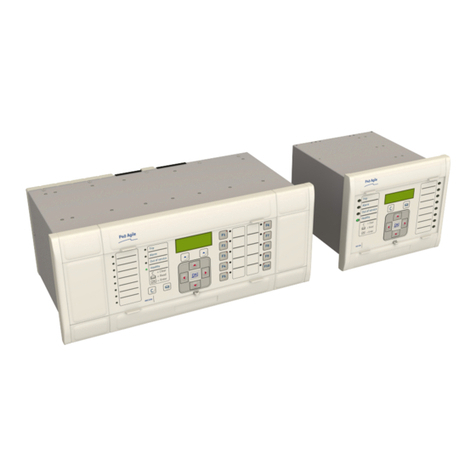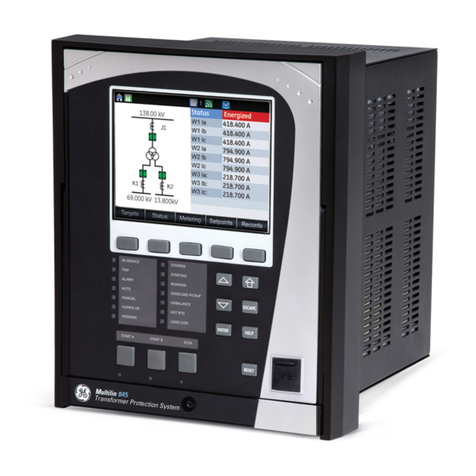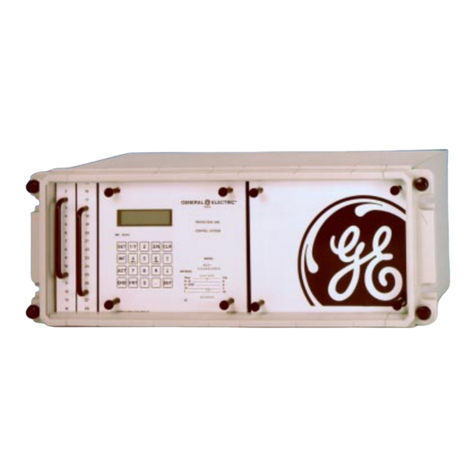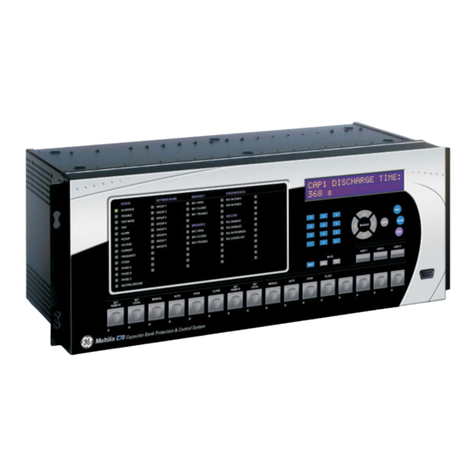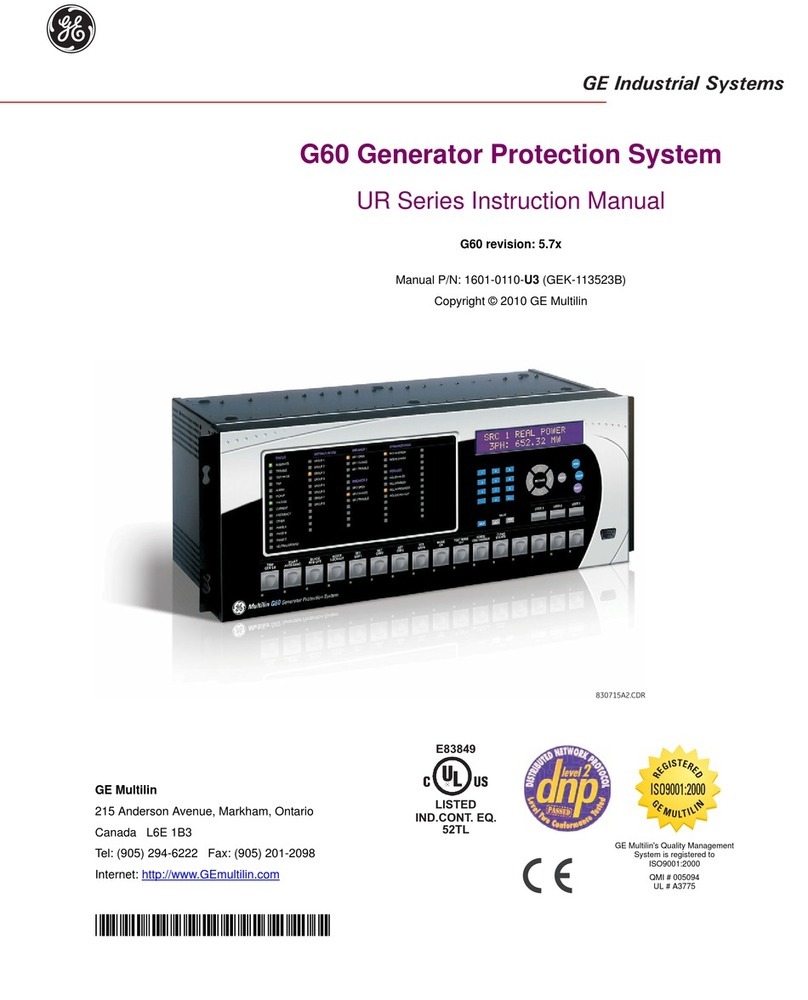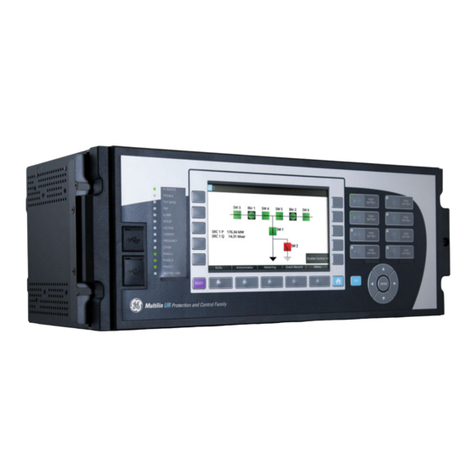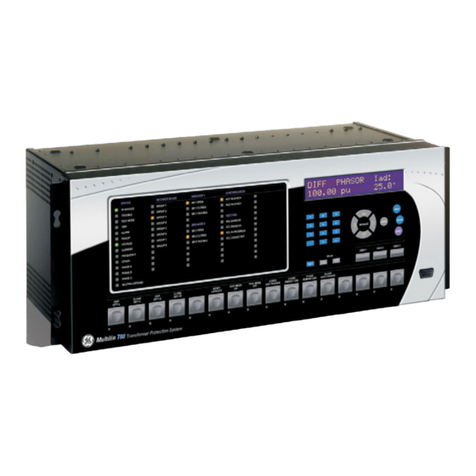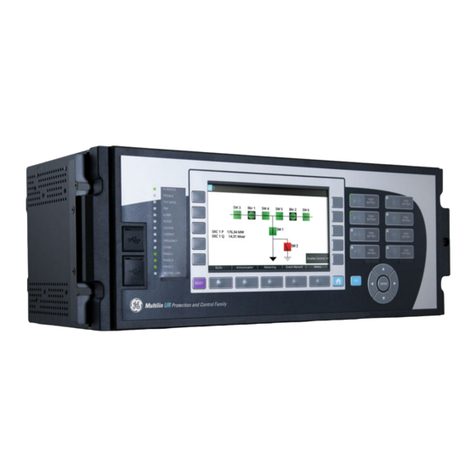
GE Multilin D60 Line Distance Protection System v
TABLE OF CONTENTS
5.3 REMOTE RESOURCES
5.3.1 REMOTE RESOURCES CONFIGURATION................................................... 5-89
5.4 SYSTEM SETUP
5.4.1 AC INPUTS ...................................................................................................... 5-90
5.4.2 POWER SYSTEM............................................................................................ 5-91
5.4.3 SIGNAL SOURCES ......................................................................................... 5-92
5.4.4 BREAKERS...................................................................................................... 5-95
5.4.5 DISCONNECT SWITCHES ............................................................................. 5-99
5.4.6 FLEXCURVES .............................................................................................. 5-102
5.4.7 PHASOR MEASUREMENT UNIT.................................................................. 5-109
5.5 FLEXLOGIC
5.5.1 INTRODUCTION TO FLEXLOGIC ................................................................ 5-131
5.5.2 FLEXLOGIC RULES ...................................................................................... 5-144
5.5.3 FLEXLOGIC EVALUATION ........................................................................... 5-144
5.5.4 FLEXLOGIC EXAMPLE ................................................................................. 5-145
5.5.5 FLEXLOGIC EQUATION EDITOR................................................................. 5-149
5.5.6 FLEXLOGIC TIMERS .................................................................................... 5-149
5.5.7 FLEXELEMENTS........................................................................................... 5-150
5.5.8 NON-VOLATILE LATCHES ........................................................................... 5-154
5.6 GROUPED ELEMENTS
5.6.1 OVERVIEW.................................................................................................... 5-155
5.6.2 SETTING GROUP ......................................................................................... 5-155
5.6.3 LINE PICKUP................................................................................................. 5-156
5.6.4 DISTANCE ..................................................................................................... 5-158
5.6.5 POWER SWING DETECT............................................................................. 5-176
5.6.6 LOAD ENCROACHMENT.............................................................................. 5-185
5.6.7 PHASE CURRENT ........................................................................................ 5-187
5.6.8 NEUTRAL CURRENT.................................................................................... 5-197
5.6.9 WATTMETRIC GROUND FAULT .................................................................. 5-205
5.6.10 GROUND CURRENT..................................................................................... 5-208
5.6.11 NEGATIVE SEQUENCE CURRENT ............................................................. 5-210
5.6.12 BREAKER FAILURE...................................................................................... 5-217
5.6.13 VOLTAGE ELEMENTS.................................................................................. 5-226
5.6.14 SENSITIVE DIRECTIONAL POWER............................................................. 5-237
5.7 CONTROL ELEMENTS
5.7.1 OVERVIEW.................................................................................................... 5-240
5.7.2 TRIP BUS....................................................................................................... 5-240
5.7.3 SETTING GROUPS ....................................................................................... 5-242
5.7.4 SELECTOR SWITCH..................................................................................... 5-244
5.7.5 TRIP OUTPUT ............................................................................................... 5-250
5.7.6 UNDERFREQUENCY.................................................................................... 5-256
5.7.7 OVERFREQUENCY ...................................................................................... 5-257
5.7.8 FREQUENCY RATE OF CHANGE................................................................ 5-258
5.7.9 SYNCHROCHECK......................................................................................... 5-260
5.7.10 AUTORECLOSE ............................................................................................ 5-264
5.7.11 DIGITAL ELEMENTS..................................................................................... 5-277
5.7.12 DIGITAL COUNTERS .................................................................................... 5-280
5.7.13 MONITORING ELEMENTS ........................................................................... 5-282
5.7.14 PILOT SCHEMES .......................................................................................... 5-302
5.8 INPUTS AND OUTPUTS
5.8.1 CONTACT INPUTS........................................................................................ 5-326
5.8.2 VIRTUAL INPUTS.......................................................................................... 5-328
5.8.3 CONTACT OUTPUTS.................................................................................... 5-329
5.8.4 VIRTUAL OUTPUTS...................................................................................... 5-331
5.8.5 REMOTE DEVICES ....................................................................................... 5-332
5.8.6 REMOTE INPUTS.......................................................................................... 5-333
5.8.7 REMOTE DOUBLE-POINT STATUS INPUTS .............................................. 5-334
5.8.8 REMOTE OUTPUTS...................................................................................... 5-334
5.8.9 RESETTING................................................................................................... 5-335
5.8.10 DIRECT INPUTS AND OUTPUTS................................................................. 5-336
5.8.11 TELEPROTECTION INPUTS AND OUTPUTS.............................................. 5-339
5.8.12 IEC 61850 GOOSE ANALOGS...................................................................... 5-341
5.8.13 IEC 61850 GOOSE INTEGERS..................................................................... 5-342






